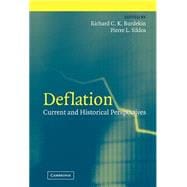
Note: Supplemental materials are not guaranteed with Rental or Used book purchases.
Purchase Benefits
Looking to rent a book? Rent Deflation: Current and Historical Perspectives [ISBN: 9780521837996] for the semester, quarter, and short term or search our site for other textbooks by Edited by Richard C. K. Burdekin , Pierre L. Siklos. Renting a textbook can save you up to 90% from the cost of buying.
| 1. Feras of deflation and the role of monetary policy: some lessons and an overview Richard C. K. Burdekin and Pierre L. Siklos | |
| 2. Deflation, silent runs, and bank holidays in the great contraction Hugh Rockhoff | |
| 3. Price change, financial stability, and the British economy, 1870-1939 Forrest Capie and Geoffrey Wood | |
| 4. Deflation dynamics in Sweden: perceptions, expectations and adjustment during the deflations of 1921-23 and 1931-33 Klas Fregert and Lars Jonung | |
| 5. Boom-busts in asset prices, economic instability, and monetary policy Michael D. Bordo and Olivier Jeanne | |
| 6. Deflation, credit and asset prices Charles Goodhart and Boris Hofmann | |
| 7. Is deflation depressing? evidence from the classical gold standard Michael D. Bordo and Angela Redish | |
| 8. The strong lira policy and deflation in Italy's inter-war period Michele Fratianni and Franco Spinelli | |
| 9. Deflation and stagnation in Japan: collapse of the monetary transmission mechanism and echo from the 1930s Michael M. Hutchison | |
| 10. Deflation, the financial crises of the 1890s, and stock exchange responses in London, New York, Paris nd Berlin Lance Davis, Larry Neal and Eugene White | |
| 11. The stock market and the business cycle in periods of deflation, (hyper-) inflation, and political turmoil: Germany 1913-1926 Martin T. Bohl and Pierre L. Siklos | |
| 12. Deflationary pressures and the role of gold stocks: 1929, 1987 and today Richard C. K. Burdekin and Marc D. Weidenmier. |
The New copy of this book will include any supplemental materials advertised. Please check the title of the book to determine if it should include any access cards, study guides, lab manuals, CDs, etc.
The Used, Rental and eBook copies of this book are not guaranteed to include any supplemental materials. Typically, only the book itself is included. This is true even if the title states it includes any access cards, study guides, lab manuals, CDs, etc.